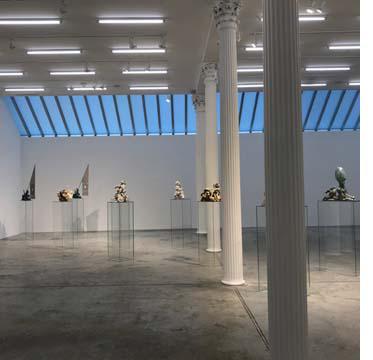The DART Board: 07.09.2020
Margaret Morton, noted phototographer, educator, and activist, died last week in her East Village apartment at age 71. Known for her pioneering work documenting the home-building practices and social lives of the homeless who moved into the cavernous underground below Penn Station in the 1990s, Margaret became a fierce advocate for their equal treatment by city agencies conditioned to sweep them further into the margins. In the process, she developed an affinity for photographing the humanity of their architectural practices, which came together in book form and an exhibition of mural-size black-and-white prints, in 1995, as The Tunnel. [Above: Margaret Morton, from Cities of the Dead]
Margaret became a friend and colleague when I edited her third book, Fragile Dwelling, Transitory Lives (Aperture 2000). This was the result of her long-time alliance with homeless people who had claimed space in Tompkins Square Park, which she viewed from her apartment windows. On a winter night in 1989, the City of New York sent bulldozers into the park to scoop away the dwellings made by its residents. She was there with her camera, and followed and supported this group over the next ten years as they re-settled in empty lots around the city.
In his essay for the book, the American Studies scholar, Alan Trachtenberg characterized Margaret’s work as being rooted in her grit and tenacity, stating that she could be considered the Jacob Reiss for our time. Her elegant photographs, always in black and white, captured the worlds she documented before they were “swept away by the tide of history,” says writer and critic Luc Sante. “She chronicles it with such extraordinary sensitivity and comprehensiveness,” he continued. “Every aspect — the good and the bad and the hard work and also the chaos. It’s a lasting memorial to this vanished slice of time, and also in a larger way to how people deal with cities.”
Ms. Morton in 2015 at a show of her work at the Leica Gallery in Manhattan. Photo: Janet Odgis
Since 1980, Margaret taught graphic design and photography at The Cooper Union School of Art. Every spring I would look forward to the exhibition of her class, Art of the Book, which was always held on the Second Floor Mezzanine of the Foundation Building. Prompted by her curiosity and discipline, the invention and artistry of her students was simply off the charts— another show of the many ways in which Margaret gave her best to others.
In 2008, Margaret set out, accompanied by a Kyrgyz art historian and a driver, to explore the largely unpopulated high plateaus of Kyrgyzstan. There she photographed the enigmatic grave sites that occupy the high terrain from the shores of Lake Issyk Kul to the city of Bistek. The result, in photographs made then and over the next two summers, is Cities of the Dead, a book and exhibition presented in 2014 by the Arthur A. Houghton Gallery at Cooper Union. A memorial service is being planned for the fall. [More about Cities of the Dead here] [More in The New York Times]
While the DART Board awaits the return of gallery openings. artist talks, and other live events to report on, the post-lockdown re-invention of how the art world turns has dished up some surprising—and not promising—information. Ben Davis, in Artnet News, writes that in a survey conducted by the market research firm LaPlaca Cohen and Slover Linett, 124,000 people offered their thoughts on what they want from their art and culture experiences in the wake of the Covid-19 pandemic. He writes: The findings reveal the state of cultural affairs in the first few months of forced lockdown, when a lot of activity shifted online. The authors try to give a sense of what the public wants from its arts institutions right now, both in terms of what people might generally want from culture in a gut-wrenching time, and more specifically what potential visitors might need to feel safe enough to return to museums and concert halls at all…. It seems to me, he says, that the data show a cultural sector in an uneasy relationship with a changing audience and changing expectations of culture, with a difficult road ahead.
In the broadest possible strokes, the findings reveal that the majority are fed up with online virtual offerings, and want more personal experiences with individual artists and performers rather than “faceless” institutions, such as museums and high-end galleries. Read it for yourself here.

Left: Bortolami Gallery on Walker Street, with works by Nicholas Guagnini; photo © Peggy Roalf
Better news emerges from Tribeca, which has seen a renaissance for gallery hoppers as more art dealers flee the cold remoteness of Chelsea for a true New York experience. Jacoba Urist, writing for The Independent. chronicles the migration, which started a few years ago along the spine of Walker Street. Wendy Olsoff, co-founder of P.P.O.W says, “All of us knew that the art world was whirling out of control: the global footprint, the dinners, and the expenses,” she reflects on the recent past. “I think people will be local for a while. There won’t be the pressure to jump on planes. People will come back to galleries on Saturdays.” As Tribeca’s art district flickers back to life, the Coronavirus may fuel slower, more intelligent art looking, says Urist.




